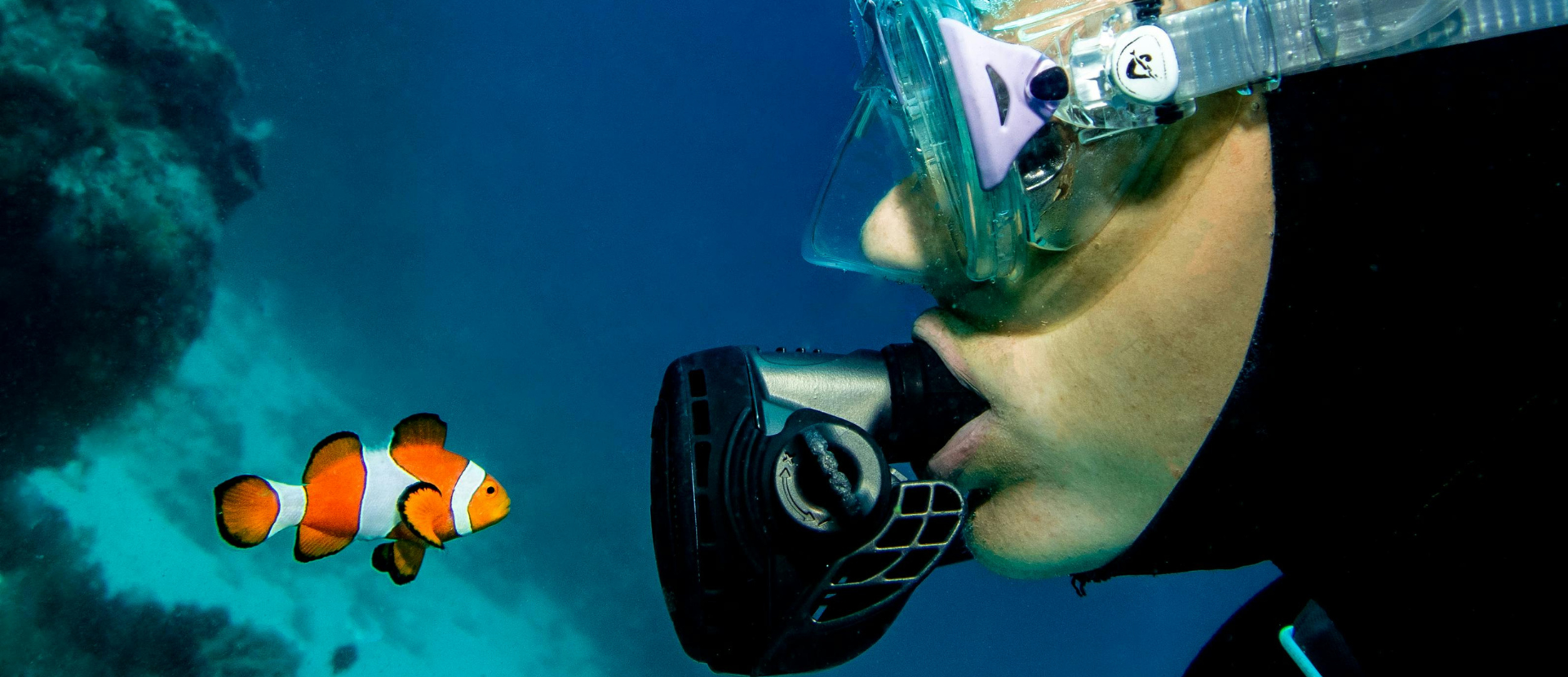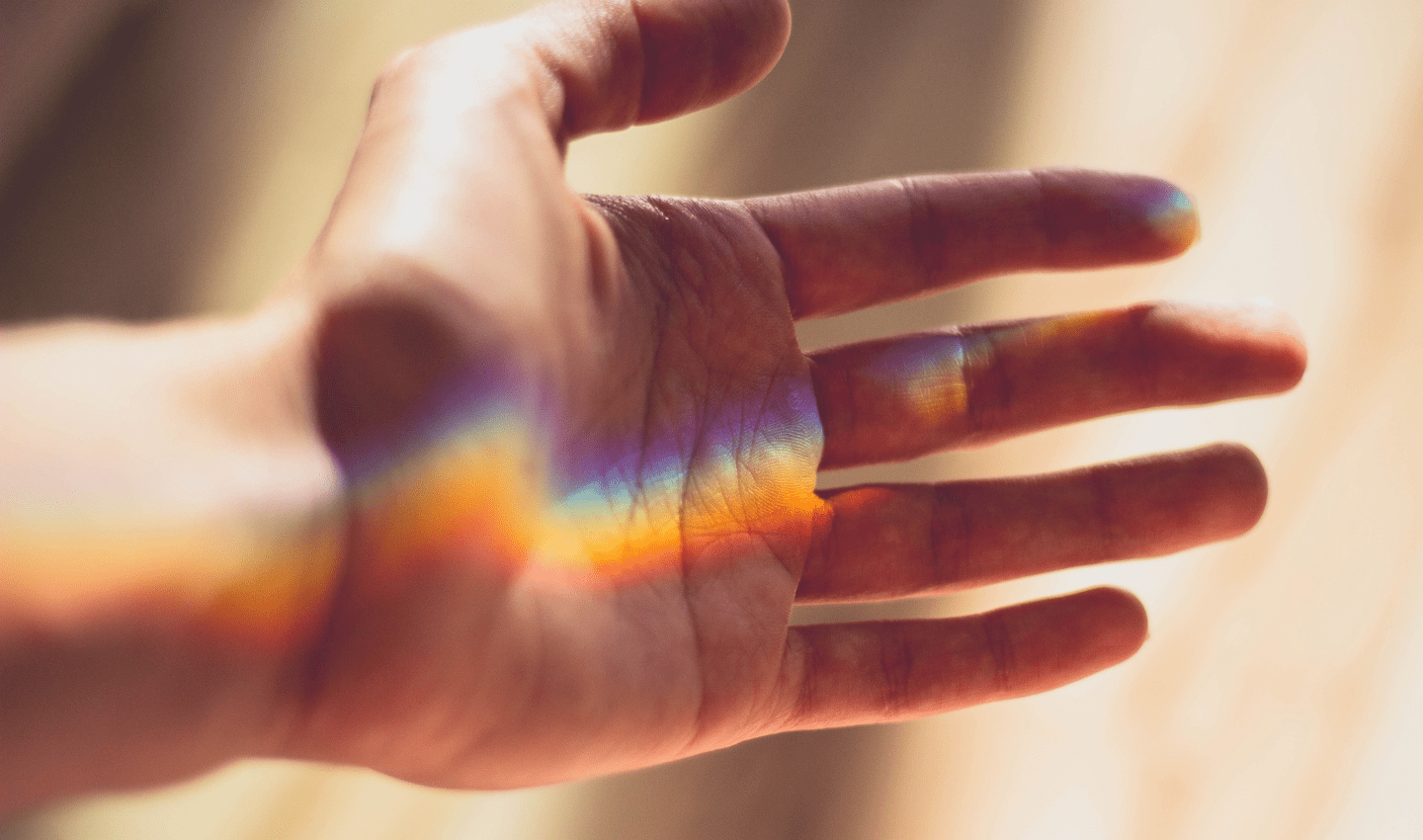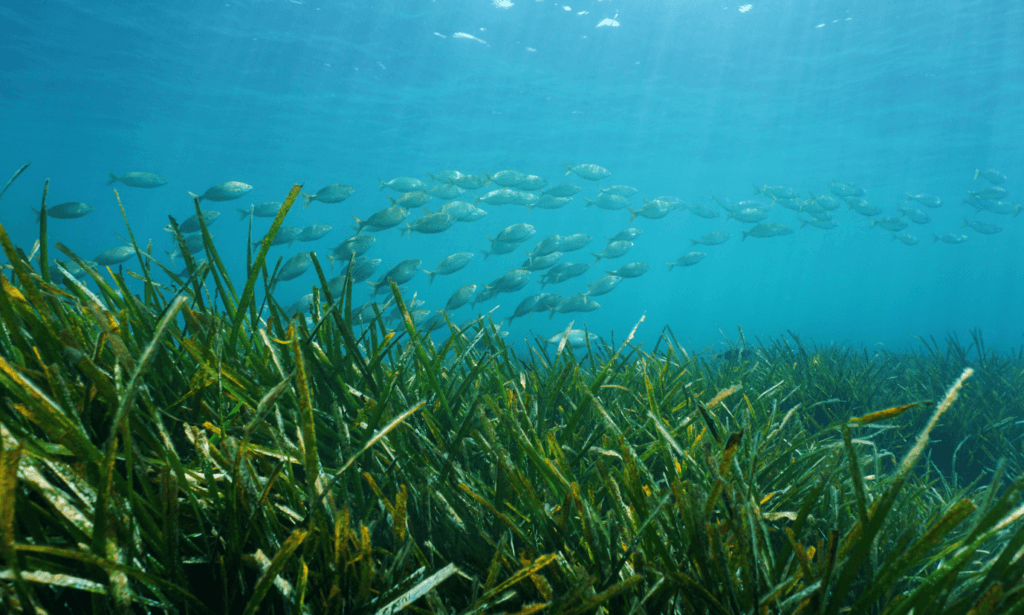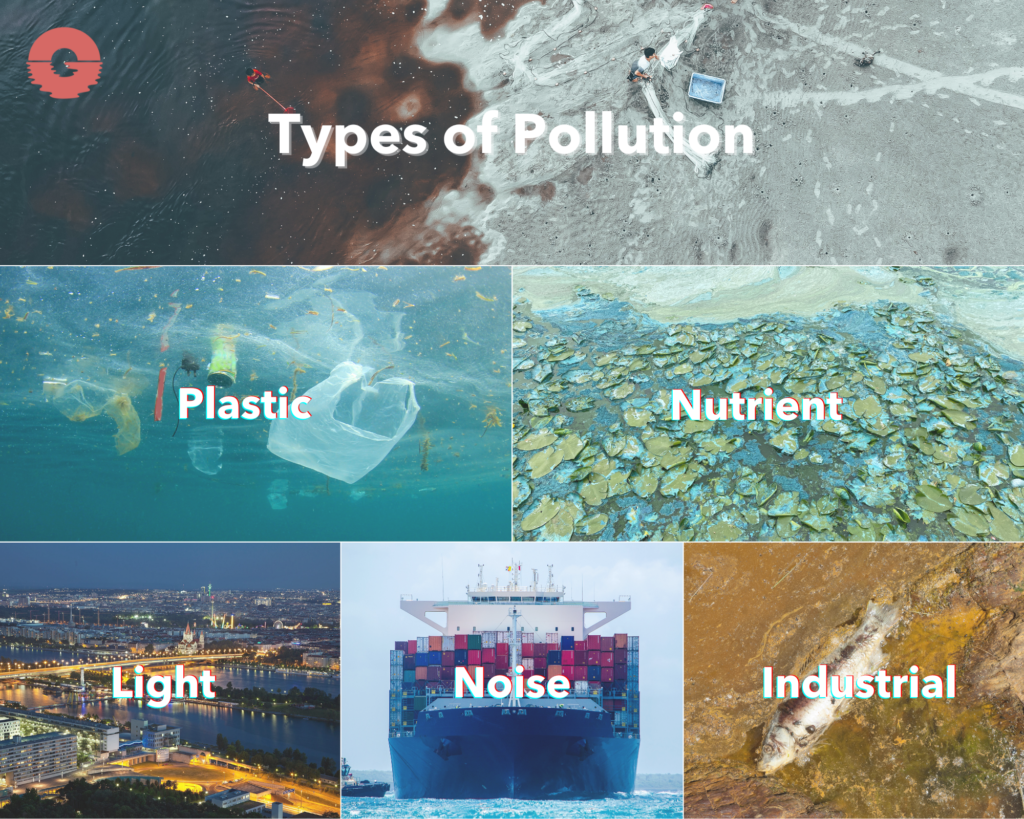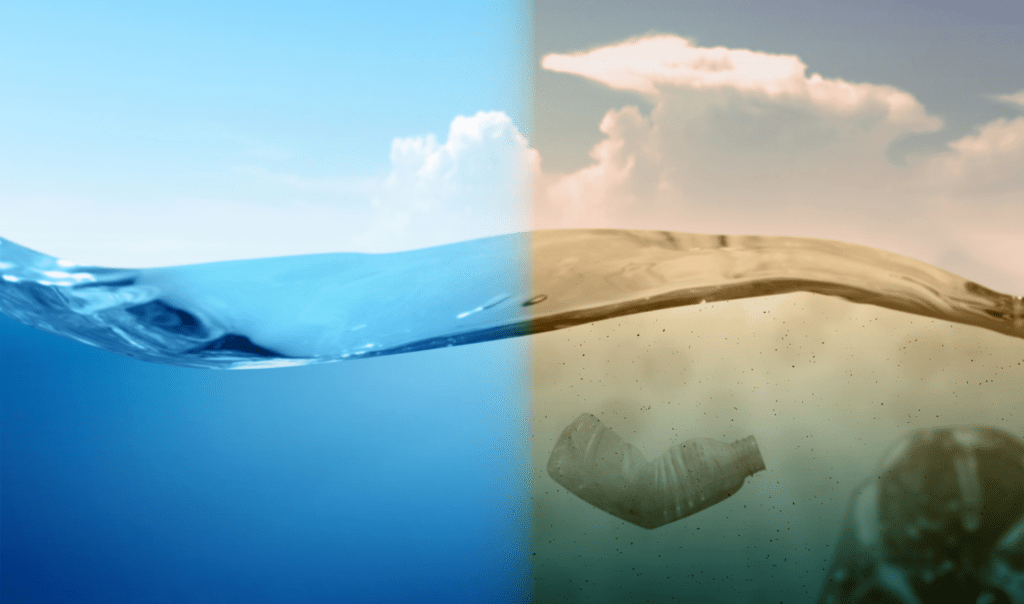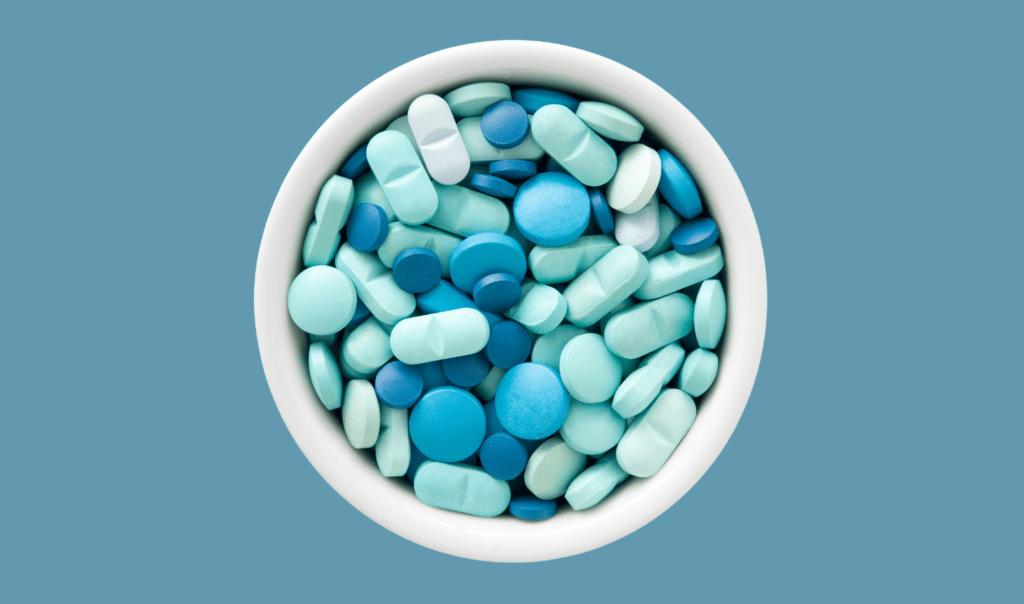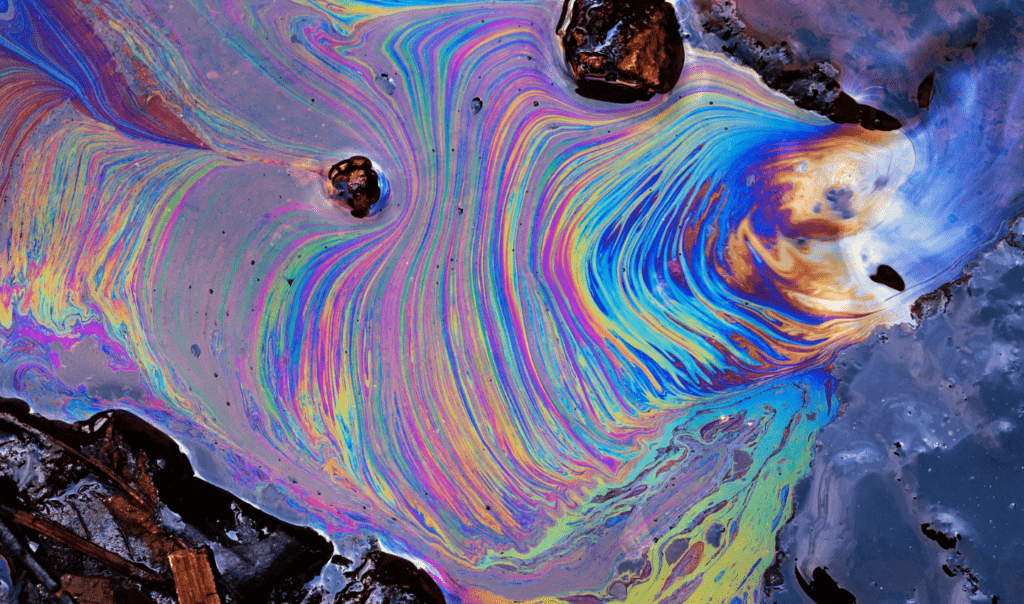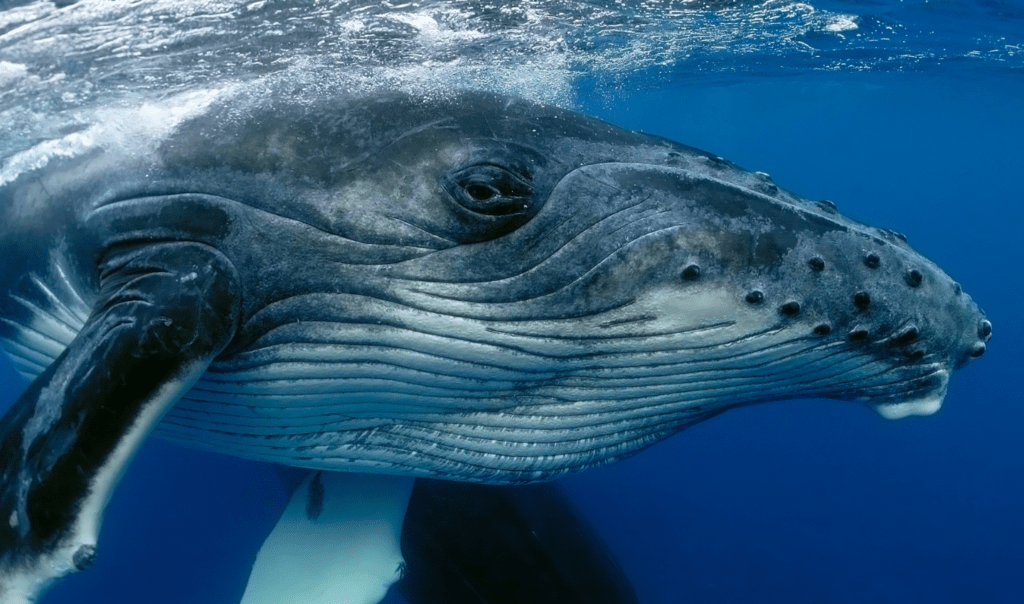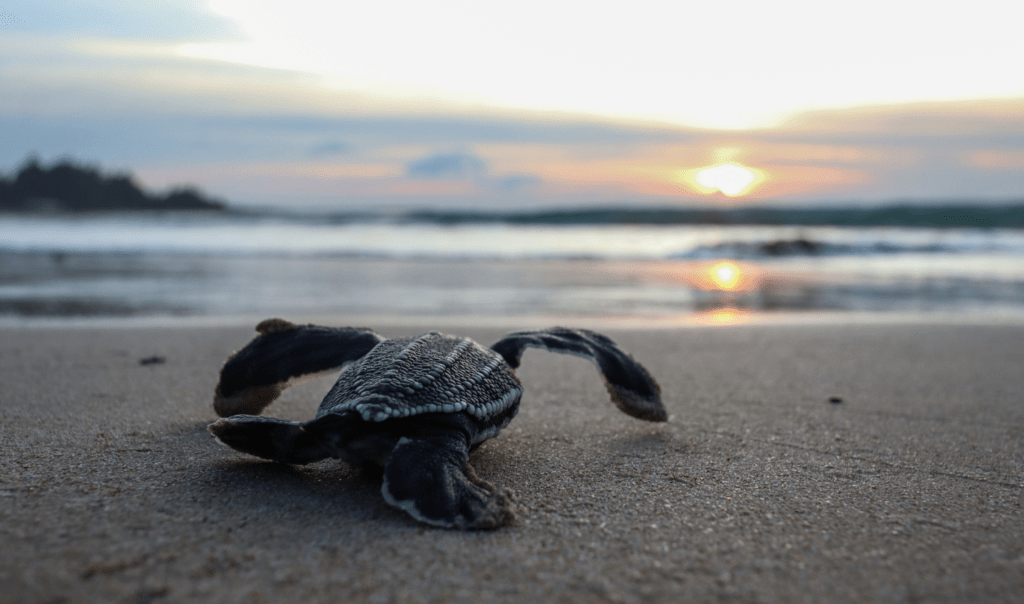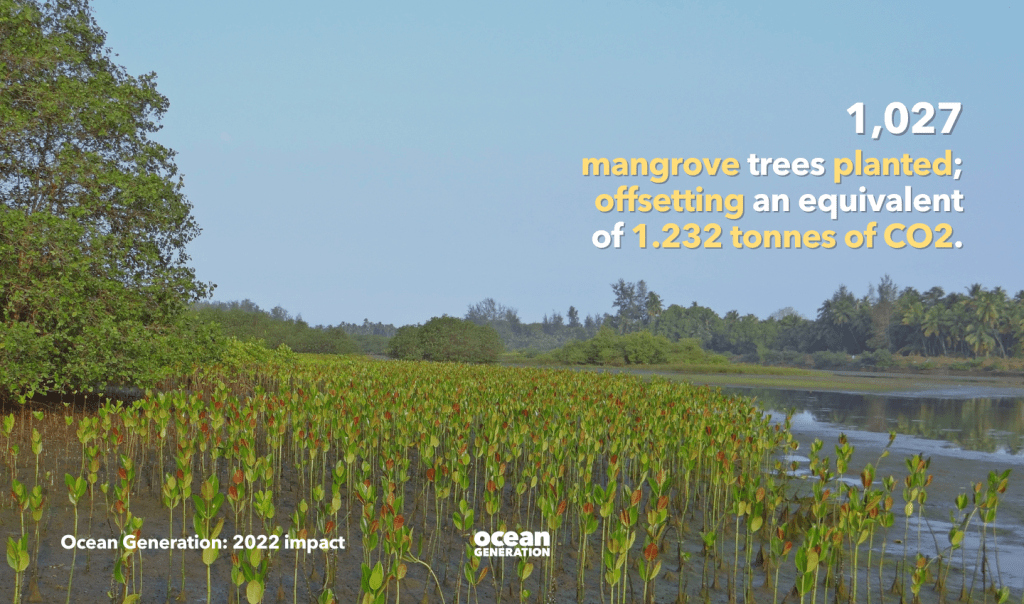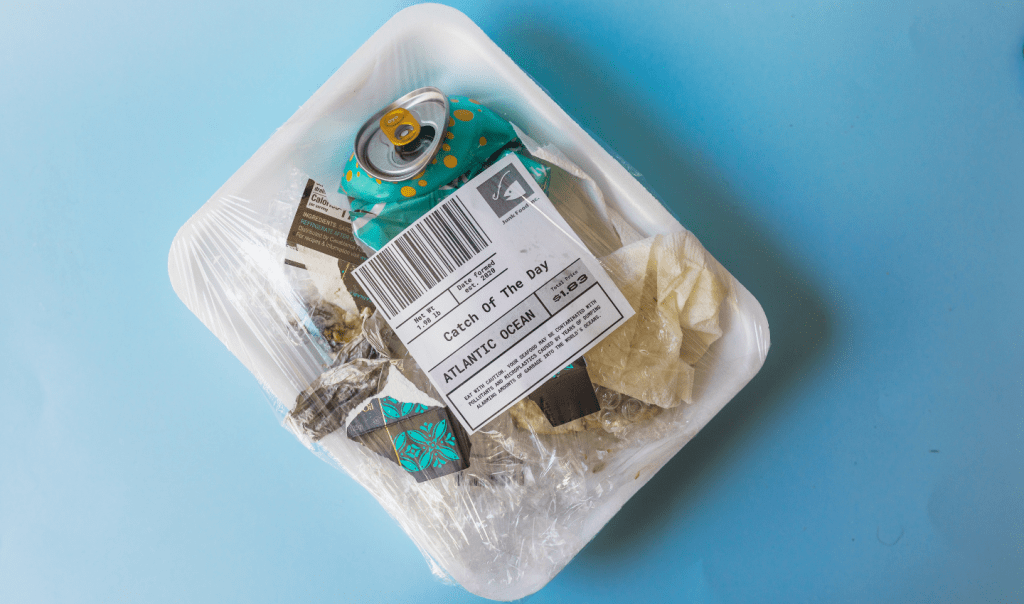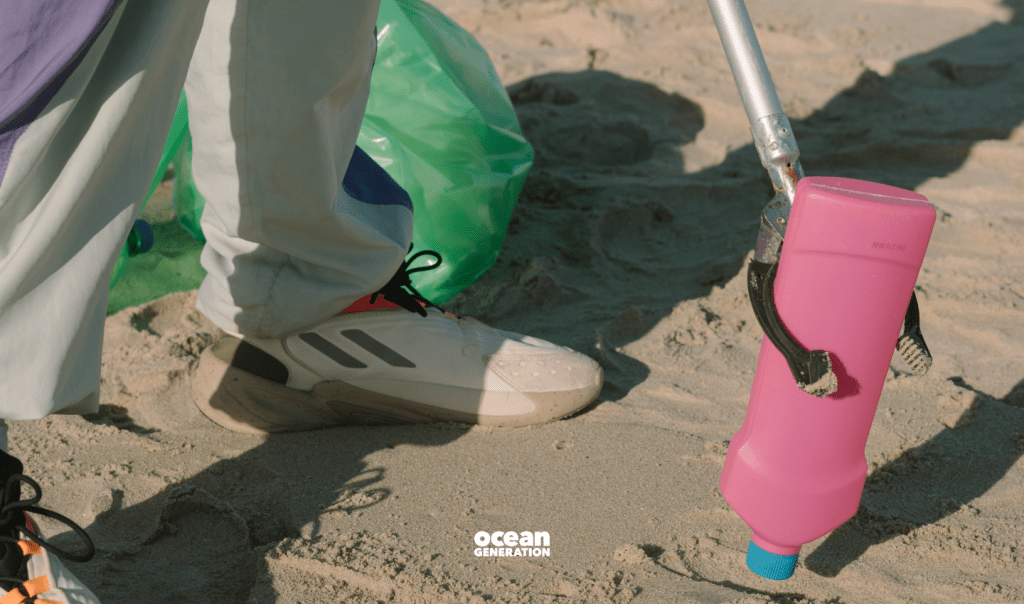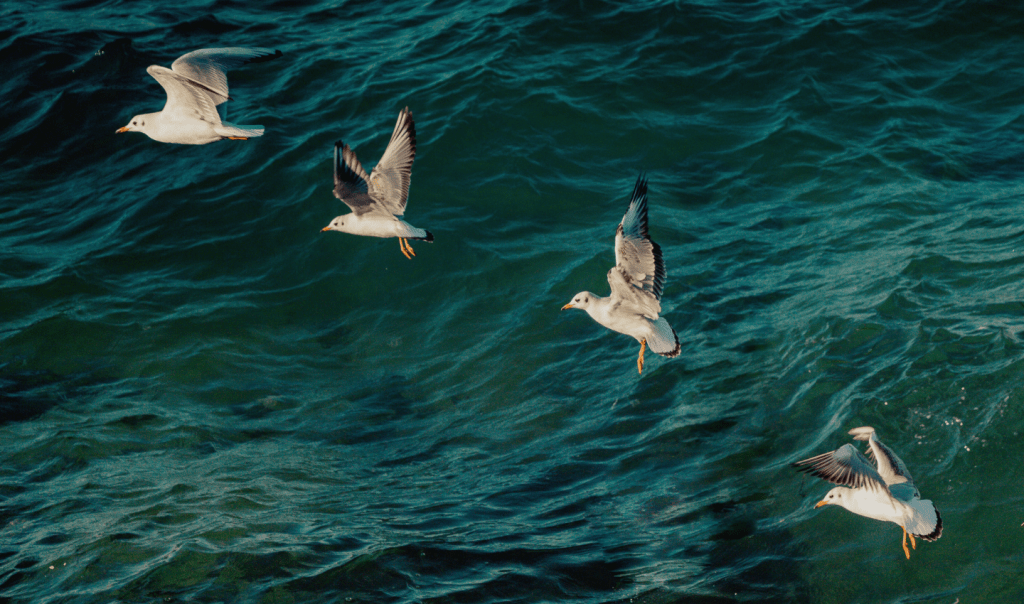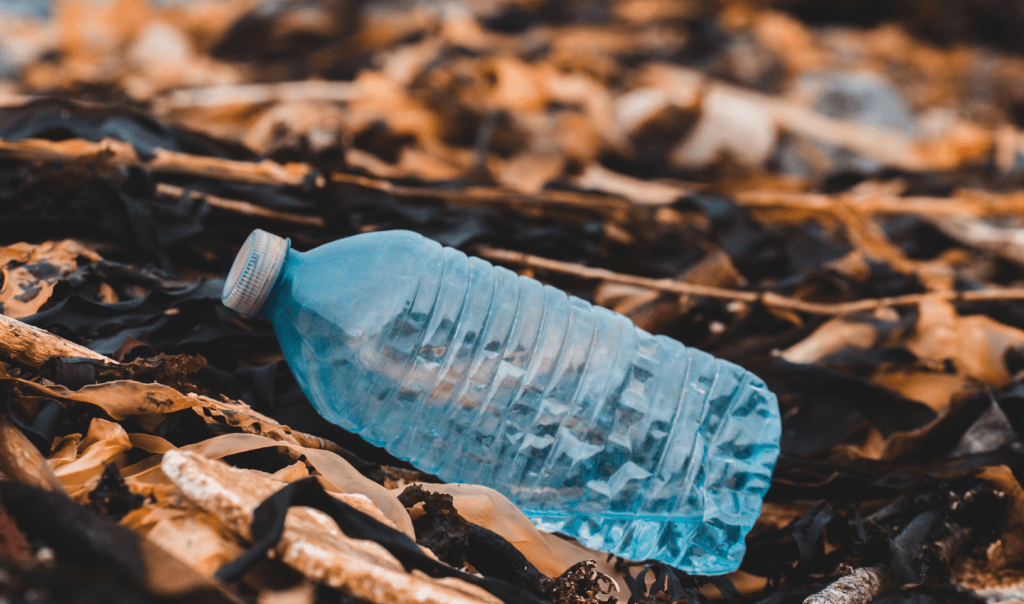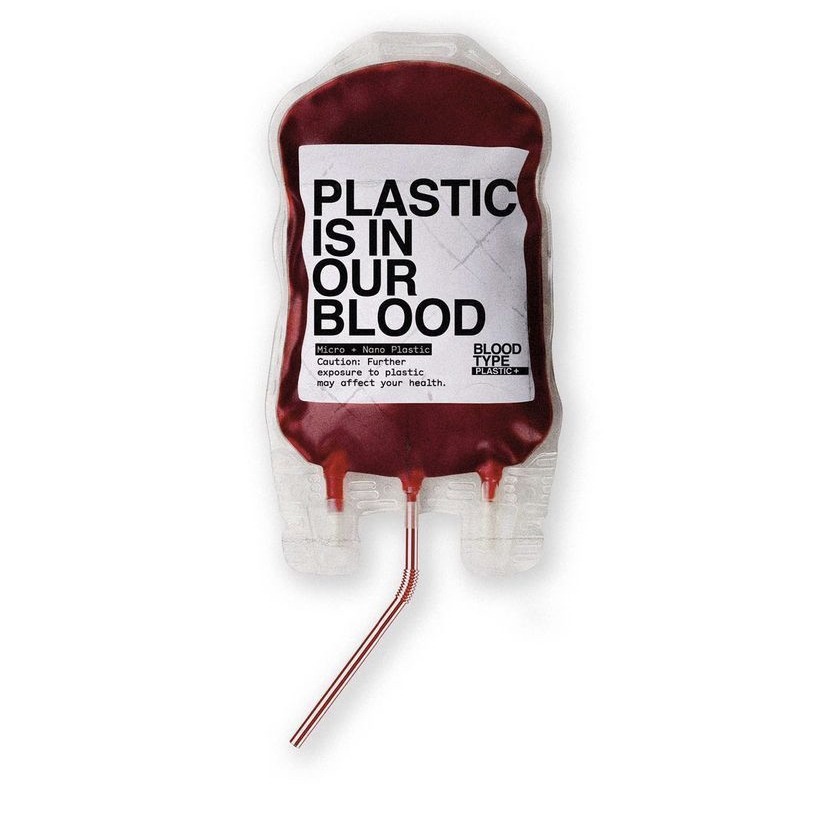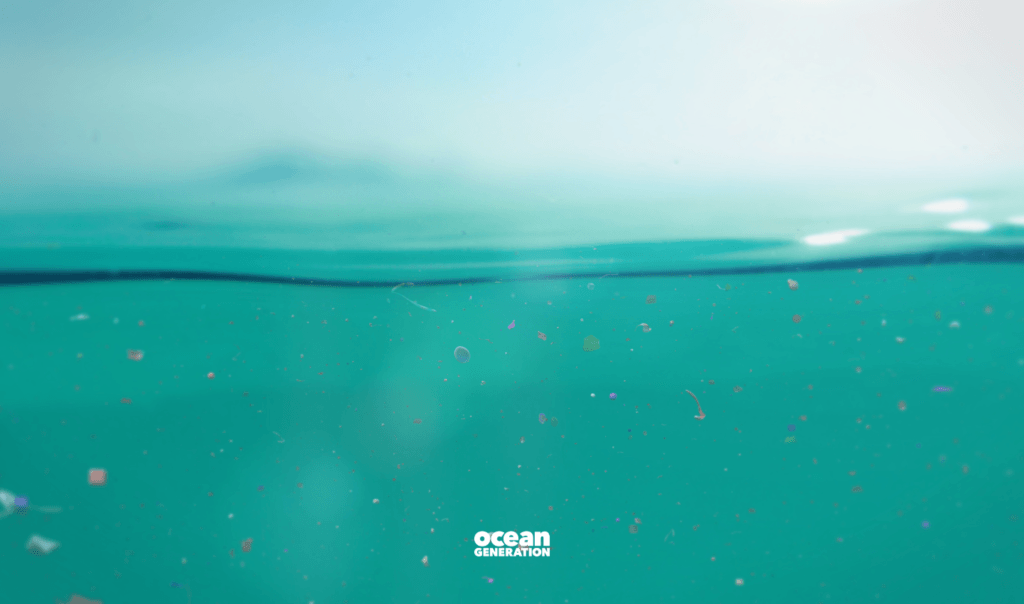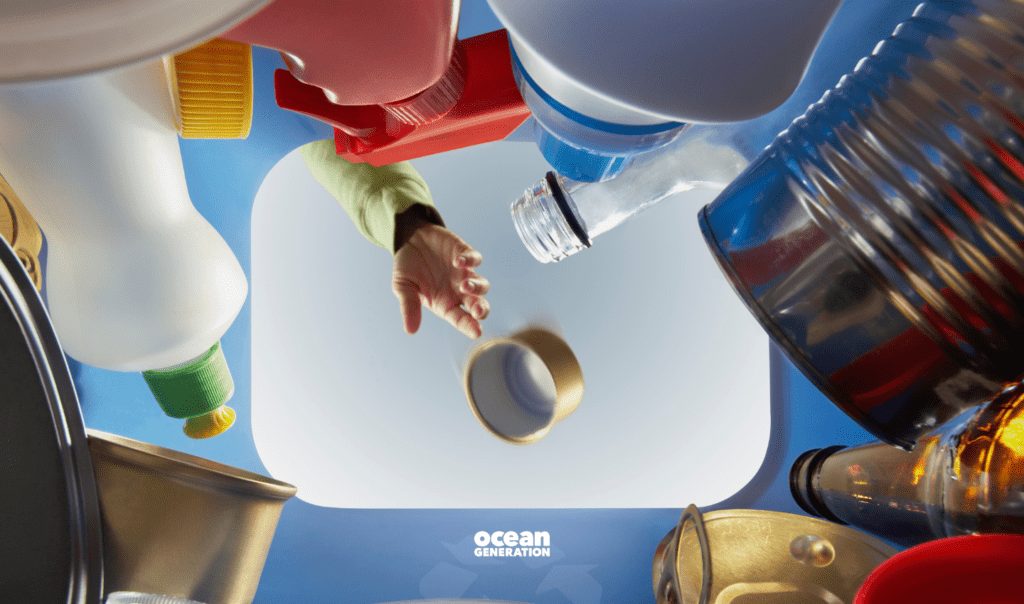- Our Impact: Threats
- Science: Explained
Our Impact: Why is protecting our coastlines important?
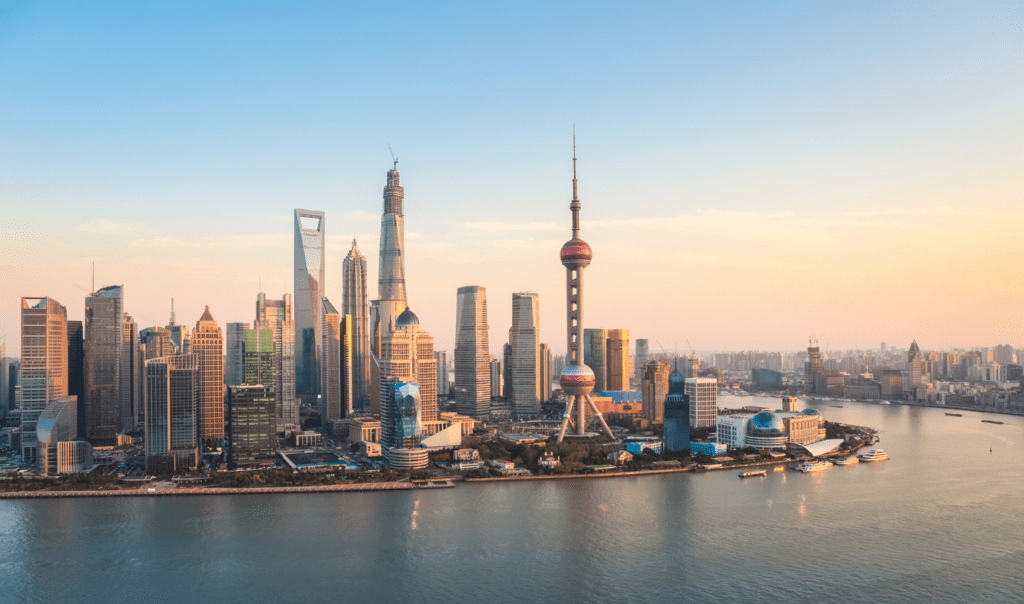
This is part of our Four Pillars work that highlights the importance of the Ocean, the human-made threats it faces, and the solutions our Ocean provides.
Think of some of the most vibrant cities around the world: Mumbai, Istanbul, Dubai, Copenhagen, Tokyo. What do they all have in common?

They are coastal cities.
How does living on the coast impact human health?
Coastal regions can positively contribute to human health. Through the food we eat, the quality of air we breathe, and the water we drink, living by the Ocean can have a calming effect.
This is not to mention the wealth of economic and recreational opportunities that come with coastal areas.
With 2.5 billion people within 100km of the coast living in 4% of land area within the same distance, it is no surprise that coastal regions are heavily concentrated. In fact, about 90% of population concentration is in coastal cities with populations of over one million.
So what?
What impact do coastal regions have on our blue planet?
The coastal zone is the most urbanised region in the world, hosting 15 of the 20 megacities (cities with populations of over 10 million people).
This rapid urbanisation of coastal regions has cracks in planetary health that we notice more and more every day.
The impacts of climate change on coastal communities are increasingly evident. With higher frequencies of natural events like cyclones and hurricanes, risk of erosion and land loss, salinisation, flooding and other cascading impacts, coastal regions have never been this vulnerable.
Let’s investigate some ways coastal infrastructure impacts the Ocean and the organisms that call it home.
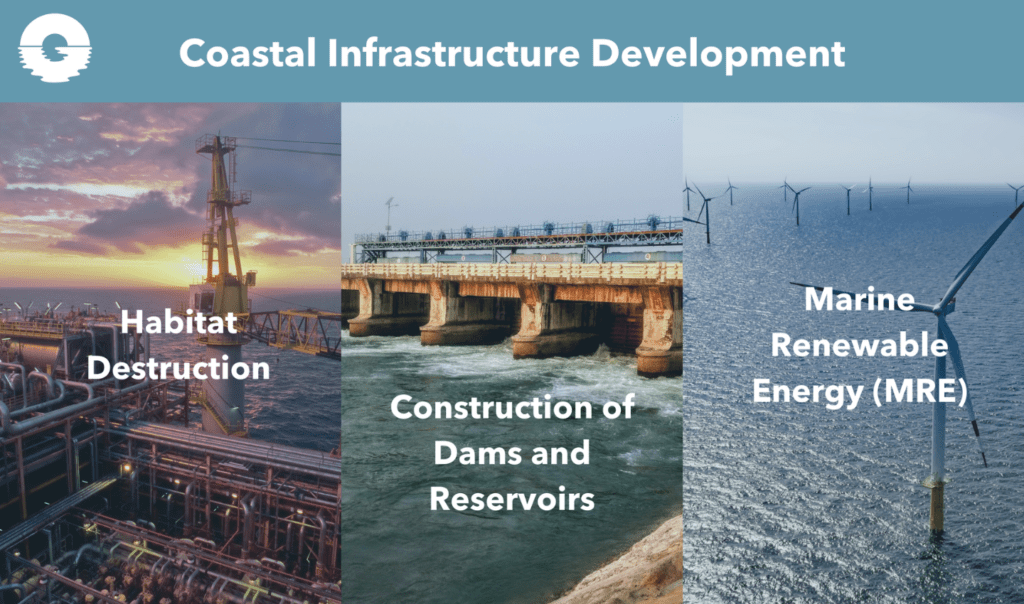
Building along our coasts causes habitat destruction.
Human activities are a key driver for habitat destruction.
This can be observed through:
– Coastal and marine land reclamation, the process by which parts of the Ocean are formed into land (by infilling or building dykes, for example)
– Infrastructure development for tourism (for example, resorts and recreational facilities)
– Development of ports, harbours, and their management (including dredging)
Habitat destruction occurs when a natural habitat, like a wetland, can no longer support the species present. The species are often destroyed or displaced.
Thus, habitat destruction is a leading cause of biodiversity loss. With changes in physical and chemical compositions, invasive species tend to thrive in these areas, further driving out native species.
Destruction of China’s Coastline: A quick study
The most significant recent development is coastal and marine land reclamation, especially in China, with 1249.8km2 of ‘new’ land developed since the mid 1980’s.
This can have many unintended consequences. In one study, scientists observed 19,793.4 hectares of coastal wetlands changed to inland wetlands enclosed by a seawall and dike, between 1989 and 2013. This cuts off the exchange of sediments and the flow of water between the wetland and the Ocean.
In this case, more than 80% of the natural wetlands had been used to develop urban, industrial, and agricultural land uses. This can be seen as an ecological trade off in favour of human activities.
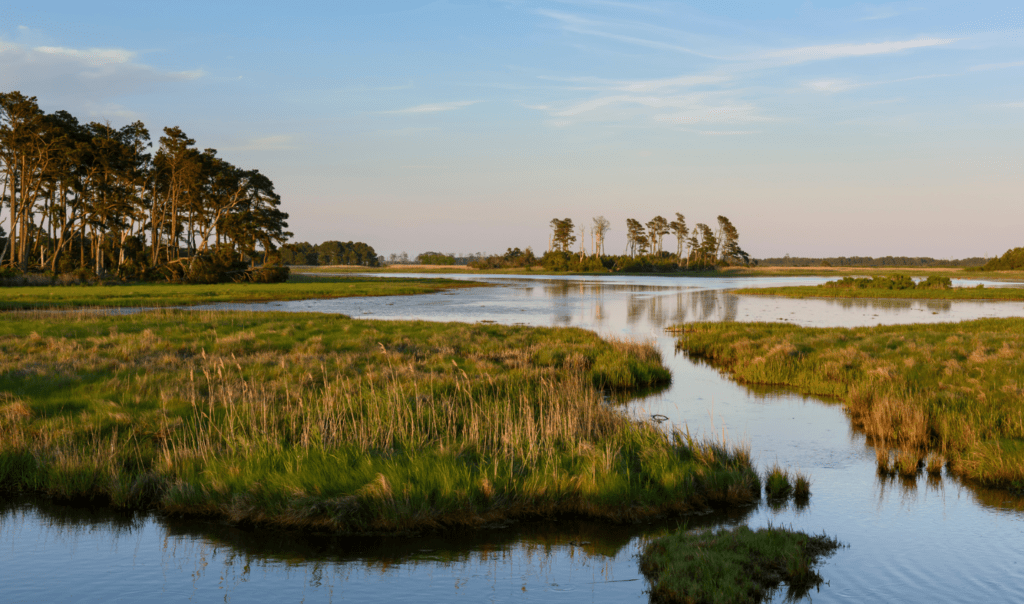
Coastal wetlands are resilient natural habitats, important for flood protection, carbon sequestration, habitat for wildlife, etc.
Destroying these natural habitats impact the Ocean, aquatic life, and humans too.
The impact of building dams and reservoirs
A dam is a barrier that holds back water whereas a reservoir is a human-made lake that stores water.
For thousands of years, dams and reservoirs have been built for irrigation, flood prevention, water diversion, and even warfare purposes. Nowadays, dams are also used to generate hydropower.
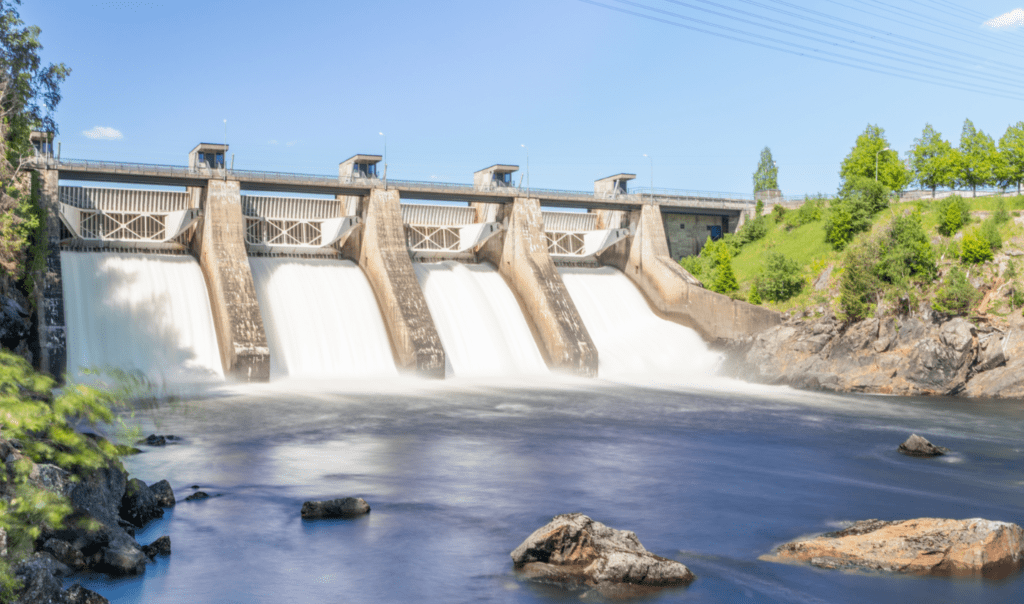
The construction of dams and reservoirs reduces sediment supply by varying degrees, sometimes by more than 50%, which leads to erosion. This can decay coastal ecosystems like mangroves and can even cause irreversible changes.
Another concerning effect of dams is that they restrict the migration of fish. Many freshwater species rely on free-flowing rivers to complete their life cycles.
The harm of building too many dams and reservoirs: A quick study
A good example to understand this effect is by observing salmon populations. In the USA, between 1933 and 1975, 211 dams were built during the construction of a hydropower system in Columbia Basin. This led to a massive loss in the wild salmon population.
Although hatchery and commercial aquaculture operations were underway, the wild salmon population failed to bounce back. Authorities had set a target for salmon recovery of 5 million, but after 34 years and $17.9 billion, they failed to meet this modest target.
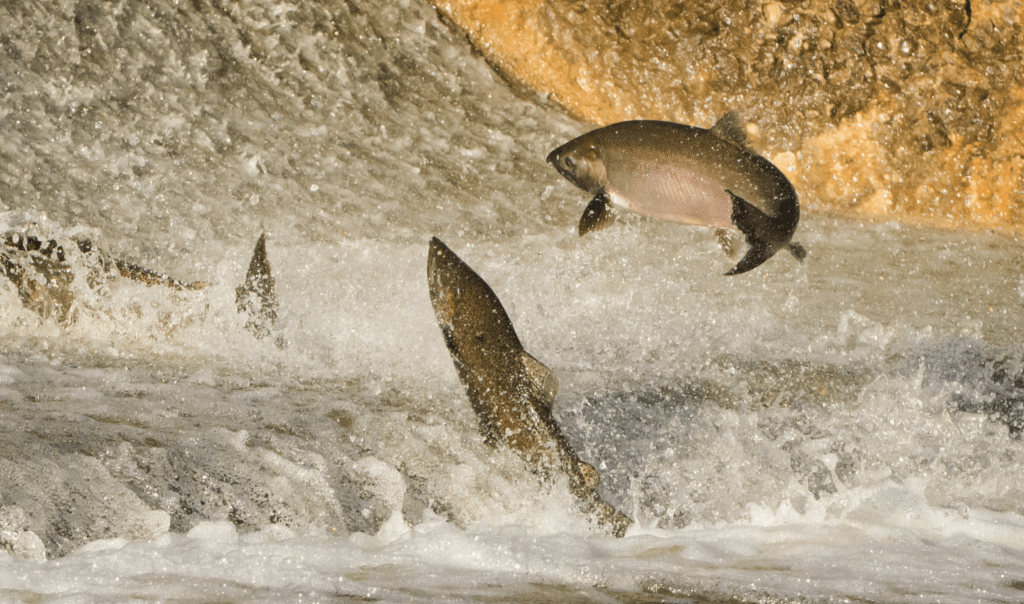
The ecological reality of the effects of human activities needs to be acknowledged alongside economic viability.
It is not too late to include these considerations in the budding marine renewable industry.
Tread lightly: Our Ocean’s role in the energy transition
The Ocean has the potential to be at the heart of the energy transition. As we steer away from fossil fuels, the Ocean is enabling a new industry: marine renewable energy (MRE).
This includes offshore wind, floating solar, tidal, wave and Ocean current energies. At present, offshore wind technology is the most mature and commercially viable, whereas some other technologies are still in the development phase.
There is no doubt that MRE is less disastrous than fossil fuel extraction. But we must be careful not to ignore the environmental impacts of MRE. This is not a truly well understood area which makes this even more important.
Environmental impacts of Marine Renewable Energy installations
The underwater infrastructures for MRE installation, like cables and anchors, can affect benthic habitats like reefs and seagrass meadows, i.e., the bottom of the Ocean. It can also affect the open waters by changing its function and characteristics.
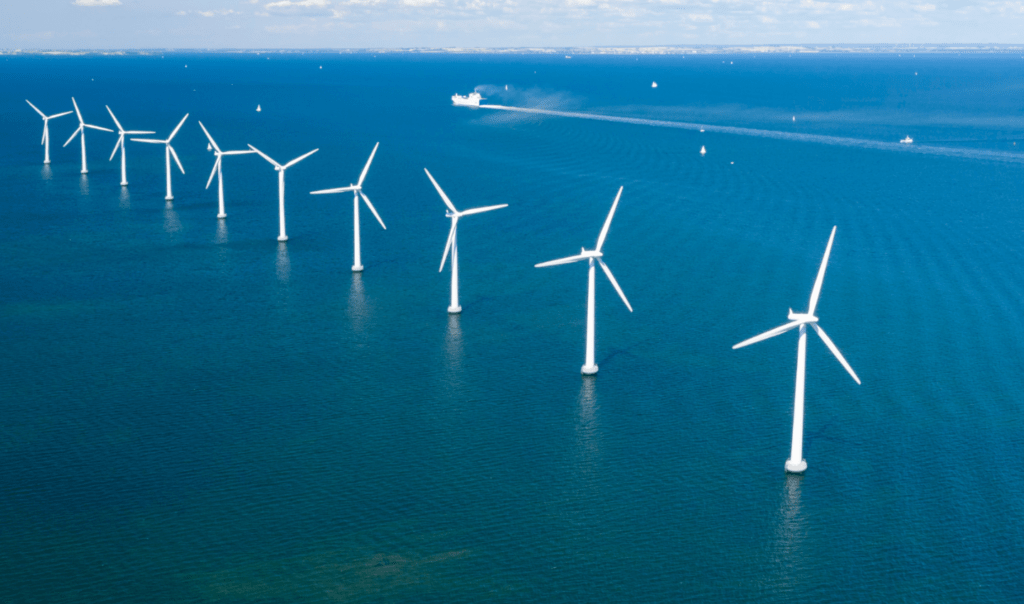
The effects of MRE can be observed through the creation of artificial reefs, and biofouling (invasive species) in offshore wind farms.
Furthermore, there is a lack of research in the following areas:
– Collision risks for fish (with underwater MRE infrastructure)
– Associated fish behaviour
– Environmental interactions between commercial fishing and offshore wind farms
– Direct interactions between tidal turbines and specific seabird populations
Although underwater noise is not an issue for operational MRE, the construction phase can have major impacts.
For example, noise generated from construction of fixed-bottom wind farms can mask echolocation sounds used by marine life for hunting, navigation, and communication. It also has the potential to impair hearing. To mitigate these effects, floating wind farms are preferable, as they do not require piling.
As we have seen, avoiding, and minimising these environmental impacts will enable successful deployment of MRE technologies at a competitive cost. However, this is not possible without further research and additional data to truly understand these impacts.
How can we build better along our coastlines?
We need to understand our environmental impacts
Currently, there is little incentive to research the environmental impacts of MRE technologies. We need robust environmental impact assessments, as well as lifecycle assessments to be as resource efficient and considerate to the Ocean and marine life.
Despite a few environmental concerns, MRE technologies are still so much better than relying on fossil fuels, greatly mitigating greenhouse gas emissions. We must choose renewable energy where possible and strive to understand the potential impacts so we can avoid and reduce them.
We need to account for ecosystems as a whole
Considering an ecosystem as a whole means that we focus on restoring our ecosystems and enhancing ecosystem services to protect us from the effects of climate change.
These kinds of measures are multi-disciplinary, which paints a better picture of what we are dealing with than traditional technical measures. This is especially needed for successful implementation of solutions to mitigate the negative effects of dams and reservoirs.
We need to invest in nature-based solutions:
Nature-based solutions focus on the protection, restoration, and management of natural and semi-natural ecosystems, to benefit both human beings and biodiversity.
The difference between nature-based solutions and ecosystem-based approaches can be found here.
Investment in nature-based solutions like coastal blue carbon ecosystems (mangroves, seagrass etc.) are important for continual coastal security and carbon sequestration.
These solutions, in addition to adaptation strategies, will be key in protecting coastal and island communities.
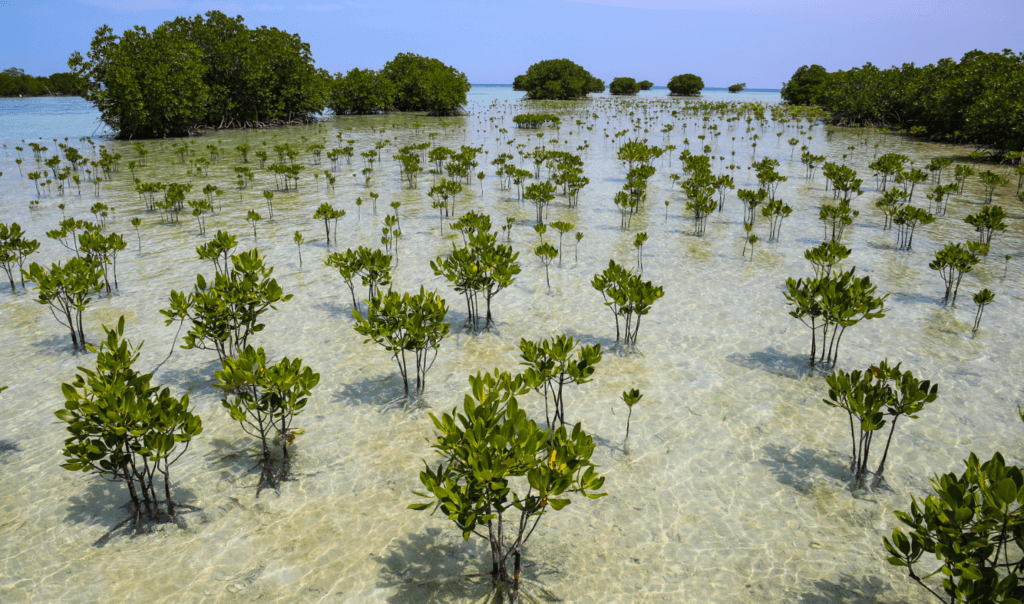
Support ongoing scientific consensus
We continue to learn about the effects of our activities on the natural environment and subsequently, ourselves, as we unlearn that humans and nature are not separate entities.
Following the latest evidence and implementing policies and practices to reflect those changes are key to limiting the damage we have done. We must not wait any longer as we have many reliable solutions already.
Our hope to save and restore the Ocean starts on land.
As with most climate initiatives affecting the Ocean, we must make sure our Ocean is part of the conversation.


